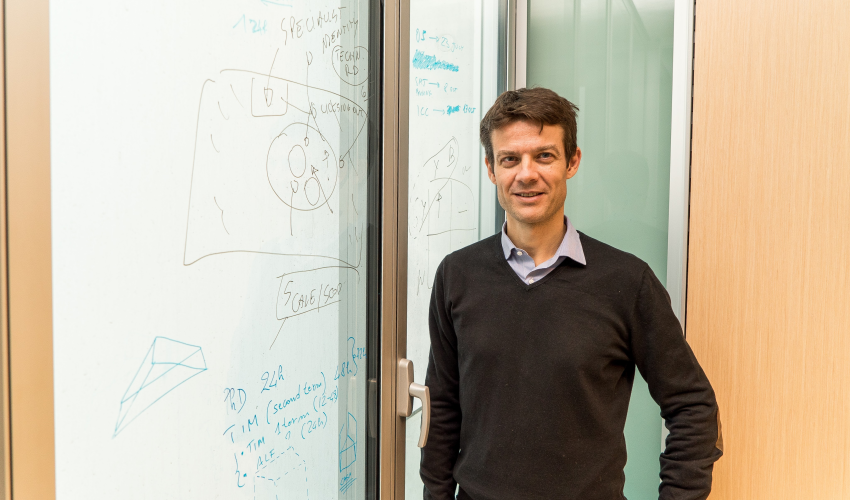
Risks Light Up Innovation
WHETHER THEY ARE MEDICAL EMERGENCIES OR SUDDEN NATURAL CATASTROPHES, THE INCREASE IN UNCERTAINTY AND RISK PERCEPTION ACCELERATES CHANGES AND INNOVATIONS IN THE PRODUCT, PROCESS AND BUSINESS MODEL. FIRST TO BENEFIT ARE THE COMPANIES THAT, APART FROM THEIR SIZE, HAVE AN EFFICIENT GOVERNANCE AND THAT OVER TIME HAVE INVESTED IN RESEARCHby Andrea Fosfuri, Dean of the PhD School, Full Professor of Management of Innovation, Bocconi University
Even in the darkest days of the COVID-19 pandemic, innovation has been flourishing all around the world. We have marveled at the ingeniousness of Dr. Renato Favero who had the idea of an emergency ventilator mask, produced by adjusting a commercially available snorkeling mask. Based on his idea, Isinnova, an Italian startup located in Brescia, 3D printed and patented an adaption valve that connects Decathlon snorkeling masks to a ventilator. Within two months from the beginning of the pandemic, Akara Robotics, an Irish startup founded by Conor McGinn, an assistant professor of mechanical engineering at Trinity College in Dublin, developed a robot emitting ultraviolet light (UVC) with the ability to disinfect hospitals and kill the COVID-19 virus that hides on surfaces. In China, robots have been designed to deliver medicines, meals, and to collect bed sheets and rubbish in hospitals. Fortunately, these are not exceptions. Hundreds of innovations have already been developed in response to the COVID-19 pandemic, as documented by online repositories like www.covidinnovations.com.
Academic research suggests that necessity is the mother of innovation. Necessity increases the expected rewards for the successful innovators, prioritizes and focuses creative efforts and pushes researchers to look for solutions outside the box. For instance, natural disasters, like earthquakes, droughts and flooding, have been associated with greater technical innovations that can reduce the risk of future hazards. Because the new normalcy will need to accommodate an appropriate level of economic activity while addressing the health and safety risks of potential new outbreaks of COVID-19, technologies that eliminate or attenuate such risks are likely to meet an increasing demand in the incoming months. A paper by Hong Luo (HBS) and Alberto Galasso (Rotman) presented last December at the BAIC conference organized by SDA Bocconi School of Management and ICRIOS specifically analyzes innovation in the realm of risk mitigating technologies.Their research suggests that firms will develop technologies, business practices, and strategies that improve customer and employee safety by mitigating the risk of contagion because the increase in risk perception makes consumers more willing to pay for safety features, which, in turn, provides producers greater incentives to innovate. Both existing companies and new startups are likely to come up with innovative solutions that can meet the enlarged demand for safety.
Many of the innovations developed in current months are solutions that could be quickly implemented in company operations. Most companies, out of necessity, have been forced to innovate in how they organize business meetings: face-to-face interactions have been replaced by video conferences across many sectors of the economy. Most universities have quickly shifted from their traditional on campus education to online teaching modalities. The research by Luo and Galasso shows that small and large companies are equally likely to develop and adopt this type of innovation. Other innovations instead require greater investments and more substantial adjustments in company operations. For instance, the development of an instantaneous testing technology that is reliable and affordable requires investments not only in product development, but also in scaling up production and commercialization. Large firms usually have deep pockets and control the complementary assets that are required to profit from innovation, as research by David Teece has shown more than 30 years ago. Together with the temporary drying up of venture capital financing, these considerations suggest that large incumbent firms have a relative advantage with this type of innovation.
Finally, other innovations will require companies to completely overhaul their current business model to deliver value to customers. Luo and Galasso’s research is silent about this case because in their study firms did not face a pandemic. However, in some sectors, to cope with social distancing and other potential disruptions should new COVID-19 outbreaks emerge, current business models may become completely obsolete. Many companies have been forced to go through a digital transformation that included migrating from on-premises systems to hybrid clouds, streamlining their financial and operational processes, improving the customer experience using technology, and creating a more flexible working environment. However, not all companies have been able to embrace these changes quickly and effectively. In a recent article with Dogan Dalay (former PhD student at Bocconi University), David Wehrheim (IESE Business School) and Christian Helmers (Santa Clara University), we show that those corporations that have both an efficient governance that allows them to be bold in decision making and have invested in science are better positioned to adjust to such a discontinuous transformation of their business model.
How long the pandemic will last and for how long our way of living will be disrupted by risks and fears is difficult to predict. However, extant research suggests that, in the incoming months, innovation surely will make it less daunting to bear with the burden of COVID-19 and hopefully will allow us go back to the old normalcy.
